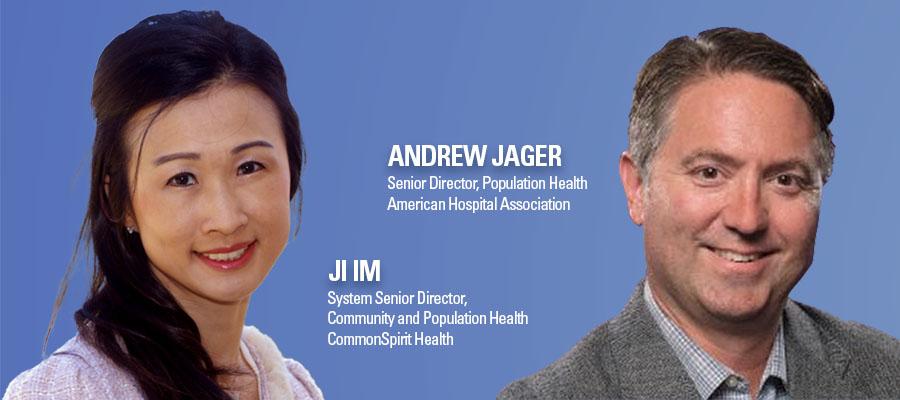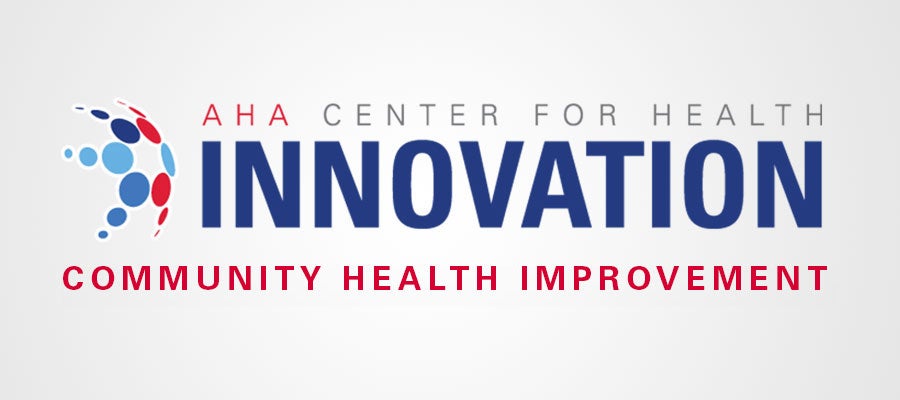Community Health as a Strategic Asset for Redesigning Care Delivery and Accelerating Health Equity


There is now consensus about what health care leaders and practitioners — not to mention community members — have long known: The conditions in which people live are major drivers of health and well-being.
Examples of how improving societal factors fosters the health of patients and communities abounded at the recent AHA Accelerating Health Equity Conference in Minneapolis. At in-person convenings and national celebrations such as Community Health Improvement Week, health care leaders and community members come together to recenter community voices and share tactics for addressing the negative impacts of experiences of racism, genderism or agism, as well as legacies of inequitable practices and systems. While this progress is inspiring, if overdue, driving systemic reform through practical actions that eliminate disparities and foster the conditions for health for all individuals and communities remains a central challenge of our day.
Improving health and addressing legacies of inequity require partnership: Hospitals and health systems cannot solve these challenges alone.
What can hospital and health system leaders do to address these complex issues? How can health care delivery systems accelerate their efforts at fostering the conditions that contribute to the health of communities, especially with current workforce and financial challenges?
Strategic Community Health Assets
The good news is that recent data show that most U.S. hospitals and health systems are already actively engaged in partnerships to cocreate the conditions for health: 99% of hospitals in the most recent AHA Annual Survey reported having at least one program to address societal factors that affect health among patients and communities, with nearly two-thirds (65%) reporting five or more such programs. This evidence shows that U.S. hospitals and their aligned partners have begun building meaningful connections with local groups to authentically understand and collaboratively address the health needs and assets of the communities they serve.
Part of cocreating the conditions for healthy communities involves conducting the systematic collection and analysis of data that go into a community health assessment and developing a plan to address the identified needs in collaboration with other key stakeholders, including local health departments and community members.
As part of a regional collaborative known as Healthy BR, Our Lady of the Lake Regional Medical Center in Baton Rouge, La., works with the municipal government to collaborate with other health care delivery systems, public health partners, health plans, community-based organizations, government agencies, local schools and others to make shared progress on community-identified health priorities including behavioral health, maternal and infant health, sexually transmitted infections, healthy living and health equity. Community health assessments provide community-level views of the current health needs and resources to address those needs. Leveraging this resource as a strategic tool can support hospitals and health systems as they make informed decisions on community grants and investments and advance initiatives addressing health-related social needs and health equity.
Community Health Improvement as a Journey
But there is much more to it than that. Community health improvement is a journey built on years of trust building and investment in people and processes, in relationships, and the laughter and tears of those who dedicate their lives and labor to creating the equitable communities where we all want to live. Forging these relationships allows opportunities to listen and activate authentic community voices to codesign solutions.
To act on the strengths and assets of communities requires authentic and sustained partnerships in programs such as the Hospital Community Collaborative and Age-Friendly Health Systems. As part of these initiatives, community partners, local health departments, community-based organizations, faith-based organizations and hospitals collaborate with the community to drive changes to make systems more equitable and impactful in addressing shared priorities through action. Resources to improve the health of the community — infrastructure, organizational knowledge and, perhaps most importantly, relationships — are important strategic assets for hospitals and health systems.
Cross-sector collaboration is necessary to identify, reach out and engage with community partners to address health-related social needs of historically marginalized patients and community members. Improving health and addressing legacies of inequity require partnership: Hospitals and health systems cannot solve these challenges alone.
Examples of such partnered efforts are CommonSpirit Health ’s Connected Community Network, which builds networks of community-based organizations to support the broader community, and the Community Bank model, which combines multiple funding and resources to financially sustain a shared goal of the community. Likewise, Pathways Community HUB model allows hospitals and health systems to tap into the community workforce through contracts for community health workers. By doing so, hospitals can catalyze and invest in community capacity and infrastructure building to create access to critical resources that mitigate health and social risk factors leading to poor health outcomes.
Community Health as an Asset
To continue making meaningful progress on accelerating health equity and collaboratively improving the health of our communities, hospitals and health systems have an integral, though not solitary, role to play. Fortunately, tools, resources, and community knowledge and capacity are readily available.
Community and population health leaders will continue to work in partnership with their colleagues — both within the systems they do their work and in the communities they serve. Seeing these initiatives, infrastructure, professional talent, investments and relationships as core strategic assets will help maintain momentum in meeting the challenge.
No one organization can achieve equitable and quality health care alone. Community health can be a strong asset to achieving the goal of creating greater access to high-quality care in all communities that hospitals and health systems serve.
Andrew Jager is senior director, population health, at the American Hospital Association, and Ji Im is system senior director, community and population health, at CommonSpirit Health.
Addressing Health-related Societal Factors at the Individual, Community and System Levels
Hospitals and health systems meet the individual needs of patients by partnering with patients themselves to better navigate complex systems. For example, Nemours Children’s Health created a tool to help build community partnerships that advance health. Many hospitals and health systems partner with community-based organizations so that when a health-related social need is identified during a clinical encounter, they can make a closed-loop referral to a trusted and vetted partner.
At the community level, hospitals and health systems are actively partnering in cocreating the conditions that can rebuild trust by collaboratively identifying health priorities with the communities they serve. For example, as part of a cross-sector collaboration in Southern California’s Ventura County, Community Memorial Healthcare identified a need for community caregiver support and acted on that need to cocreate with two other local health systems a Caregiver Navigator program to provide support and easy access to resources that help ease the burden of caregiving.
And at the system level, hospitals and health systems are taking an increasingly intentional approach to contribute to the long-term strength and resilience of communities by pursuing place-based investments in community health and applying a broad array of anchor strategies. For example, Boston Medical Center recently used what it learned in its 2022 community health needs assessment to participate in creating Nubian Markets, a new grocery store in an underserved part of its community that provides nutritious, culturally aligned food options to residents.

